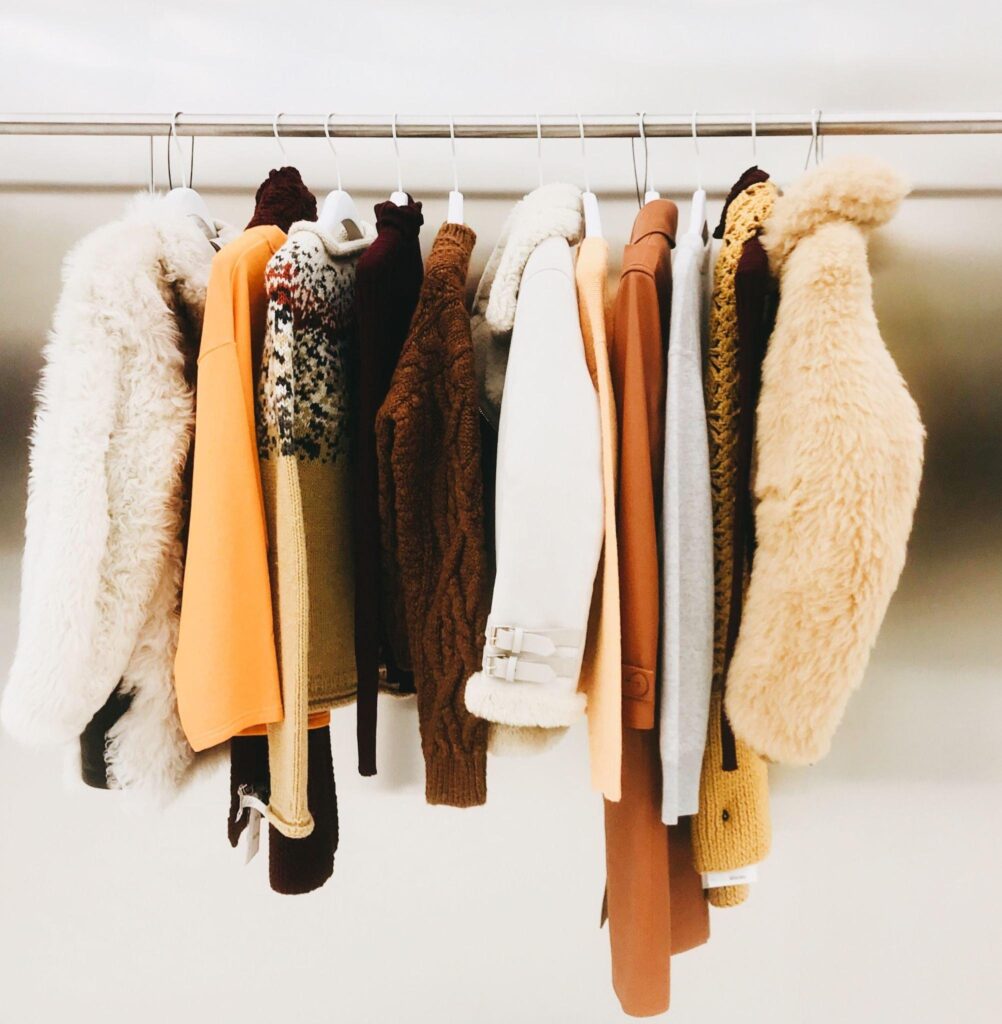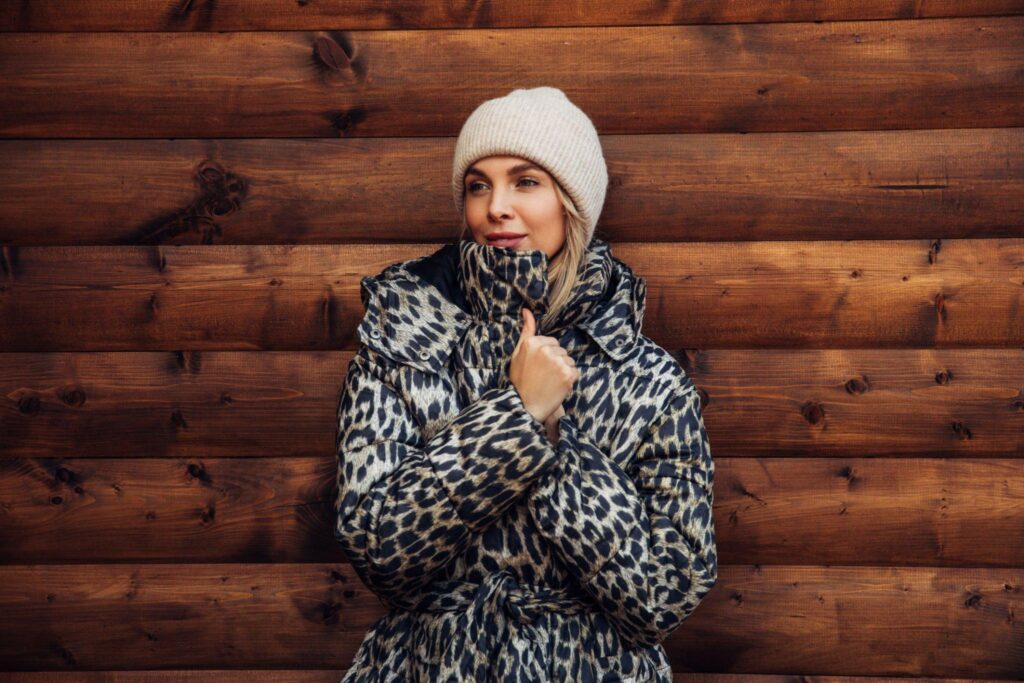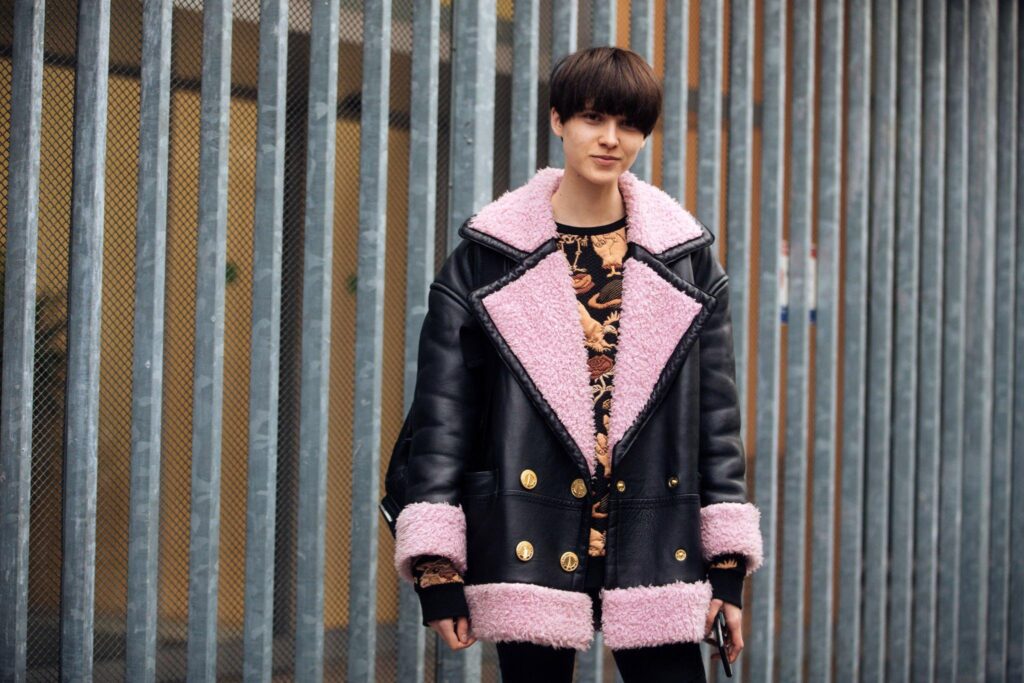Both coat and jacket words are commonly used as equivalents. Most people get them mixed, although jackets and coats are distinct outerwear items.
The length is where you’ll notice the most variation; jackets are bulky and typically reach the hip or beyond.
Jackets, on the other hand, are not as long as coats and typically end at or below the hips. Both men and women wear jackets of varying lengths. They’re often hip-to-thigh-length. In contrast, jackets keep you toasty; even denim is a type of jacket.
In contrast to jackets vs coats, which are distinguished by their length, parkas can be defined as a type of outerwear.
Now that you know the key difference between jacket and coat, shopping for one should be a breeze.
It is common to practice using the words “jacket” and “coat” interchangeably today, particularly in American English.
Now more than ever, a jacket serves more as a stylish accessory than a protective garment. Coats continue to serve primarily as outerwear. Many people’s outerwear ensembles consist of a jacket and coat.
What Is The Difference Between a Jacket And a Coat?
Here below it’s explained the differences between a jackets and a coats in terms of their respective characteristics;
What, exactly, are jackets?


The French word Jaquet, meaning “little” or “light” tunic, is where we get our word “jacket.”
With the advent of modern styles that blur or combine the lines between the two, the words “jacket” and “coat” are often used interchangeably. It’s designed to be worn across the shoulders and chest.
Compared to a coat, it is typically less bulky, lighter, and warmer.
Simple example: denim jackets. They are versatile enough to be worn to the grocery store, to a friend’s house, or to a party.
Here are some features of jackets;
-
Weight
Mostly, light to medium weight.
-
Fabric
Any fabric can be used to make a jacket, but synthetics like polyester and lightweight cotton are the most common.
-
Fastening
Usually a metal zip, but it can also be done with small buttons or other ways.
-
Length
At hips or higher. Usually, they are shorter than coats.
Jackets are long enough to reach the hips or waist and are worn on top of other clothes.
-
Sleeves
Most jackets have sleeves, but some, such as waistcoats, don’t have any.
-
Layering
Some jackets can be worn over or under another layer, depending on how they are made. One example of a layering piece is a knitted bomber jacket.
-
Insulation and Temperature
Unless it’s very cold or hot, most jackets can be worn in most weather, depending on the material and weave. This means that they are good for the months in between. They usually don’t keep you as warm as coats.
-
Fit
Most jackets can fit tighter because they are more casual.
Coverage
A jacket covers most of the upper body, but not all of it.
-
Formal or casual
A jacket can be dressy or casual, like a blazer or a Harrington jacket.
Examples
- Different types of leather jackets
- Harrington jacket
- Denim jacket
- Blazer
What, Exactly, Are Coats?


The first time the word “coat” was used in English, it referred to a chain mail garment worn for protection against weapons. However, in the modern era, a coat has no other purpose than to keep the person warm.
One of the primary functions of a coat is to provide insulation from cold weather. They include long sleeves and a variety of closures at the front, including buttons, zippers, hook-and-loop tape, zips, and belt loops.
Here are some features of coats;
-
Weight
Can be any weight but usually weighs between medium and heavy.
-
Fabric
Can be made of any kind of fabric but is usually made of something warmer and heavier, like wool.
-
Lacing
Most coats have buttons or toggles to close them. Some of them, like trench coats, come with a belt.
-
Length
Or below the hip. It is usually longer than a jacket and can be anywhere from the knee to the ankle. It is worn when it is cold.
-
Sleeves
The sleeves on every coat are long.
-
Layering
A coat is always the last thing you put on, also called “outerwear.”
-
Insulation And Temperature
Since winter coats are heavier, thicker, and warmer, they are better for cold weather.
-
Fit
Since they are meant to be worn on the outside, some have a looser fit so they can be worn over other things like suit jackets. But there are coats that fit closer and can be worn without an underlayer.
-
Coverage
A coat covers the whole body and can go down to the legs.
-
Formal Or Casual
Coats tend to be more formal, especially since many of them are made to go over suits.
Examples
- Overcoats made of wool
- Trench coats
- Raincoats
- Pea coats
The Same Things About a Coat and a Jacket
- Men and women both wear coat or jacket as outerwear.
- Both have a front opening and long sleeves.
- They keep you warm in cold weather.
- Most of the time, they cover the upper body.
- Winter coat vs jacket come in many different types and styles.
- It’s also important to know that most places in the world use the words “coat” and “jacket” interchangeably.
Why Winter Jackets And Coats Are Good


- Long-sleeved
- Different sizes are available
- Best when they are used as motor jackets
- Available in various colors and designs
- Warm but not too heavy
- You can take them anywhere
- Water-resistant
- Coats are very comfortable and keep you warm enough
- Coats are fashionable
- Smart and affordable
Popular Styles Of Jackets Vs Coats
There is a wide variety of coats out there, but here’s a compiled a list of the most fashionable styles for your consideration.
- Parka
- Fur coat
- Bunny Hug
- Body Warmer
- Blazer
- Barbour
- Fleece
- Bomber Jacket
- Flying Jacket
- Top Coat
- Windcheater
- Trucker
- Hoodie
- Down Jacket
- Trench Coat
- Overall
- Waterproof
- Linen Jacket
What Characteristics Identify a Jacket As Jacket?


A jacket covers the upper torso and falls just below the hips. Compared to a coat, it is far less warm, lightweight, and form-fitting. The materials used to construct a jacket are what defines it as a jacket.
There is a wide variety of jackets manufacturers to choose from, and each is constructed from its own unique combination of lining fabric, label fabric, sewing thread, shell fabric, zipper, interlining, and button fabric.
What To Look For In a Coat And Jacket Difference
- Use neutral colors
- Choose something that fits your body type.
- What material was used to make it
- You should shop around after getting a second opinion
- Take your time selecting the piece
Make sure that any jacket you own is well-made and of great quality, as this is the case with any article of custom clothing company.
If you want to buy a fantastic jacket, it’s important to know what makes them excellent. Always think about the label, and examine the lining in addition to the fabric.
What Do You Call a Jacket That Has a Hood?


A parka is a type of warm-weather outerwear consisting of a jacket with a hoodie. It’s inexpensive, sophisticated, and trendy, and it has many uses.
Hooded jackets are popular among guys because they allow you to protect your head from the wind and rain. A parka has been made in such a way that it stands out from the moment you put it on.
Its many advantages have made it a top choice for the vast majority of individuals. If you frequently find yourself in chilly climates, investing in a high-quality parka is your best bet; you can afford to buy two or more without worrying about replacing them for a long time.
Parkas are cheap and easy to get, and there is a wide selection of styles and colors from which to choose. Investing in a long-lasting item is a cost-effective way to stay warm because you won’t need to replace it as often and may use the money you’ve saved to buy something fancier.
Is a Parka a Type Of Coat Or Jacket?


It’s a windproof and insulating jacket perfect for winter. Although parka hoodies have evolved in style throughout the years, their primary purpose of protecting their wearers from cold and wet weather has remained the same.
In the early 1950s, a year after its inception in a region known for its icy conditions, many individuals began donning parkas because they were fashionable and practical.
A parka is a type of garment that is cut shorter than traditional coats; typically, they stop just above the knee and feature a waist-girth design to keep you warm.
You need a warm winter coat or parka, but you can’t decide which to get. Learn the distinctions between them, and you’ll have a much easier time deciding which one to use.
If you don’t know, a parka will keep you warm and dry if it rains. As parka styles evolve to become more sophisticated, they are now widely available to consumers.
Comparison Between a Parka And a Coat
The key distinction between parkas and coats is the length. Parkas are much too long, whereas coats are much too short. Parkas have a longer length than coats, allowing them to cover the waist and provide greater insulation.
Parkas that reach below the knee are considered less classic than those that stop at or above the thigh. The lengths that parkas are cut at also vary.
Examining the jacket’s finer points should be your first step when shopping for a parka. Parkas are elegant and functional, so pick the right one by paying attention to the finer points.
Parkas are practical for chilly weather but are also versatile enough to be worn year-round. Don’t get the two garments mixed up; parkas are much warmer than coats due to the materials they’re constructed from.
Can You wear Both a Jacket And a Coat?


There are times and places when you can get away with wearing both a jacket and a coat. To keep warm in the cold while still looking professional in your suit, you should layer a coat over your suit jacket.
When going outside, a jacket is typically chosen for warmer weather, while a coat is chosen for colder weather. For instance, a winter coat is not something you would wear over a denim jacket.
Conclusion
Both men and women wear these outerwear items. Coats are typically much longer than jackets, which is the primary coat and jacket difference. Coats typically end at or below the hips, while jackets stop at the waist or hips.
The length of a Coat vs Jacket is the most obvious difference between coat and jacket. Warmer fabrics and higher insulation are standard in coats. While most jackets are more at home in the house than on the outside, coats serve as outerwear just as well and are better suited for the great outdoors.
It’s common for coats, especially pea coats and wool outerwear, to be dressier than jackets. Pea coats, wool, down-filled, or wrap-style winter coats, and trench jackets are all popular choices. Jackets come in a variety of styles, with suit jackets, blazers, and denim jackets being some of the most popular options.




